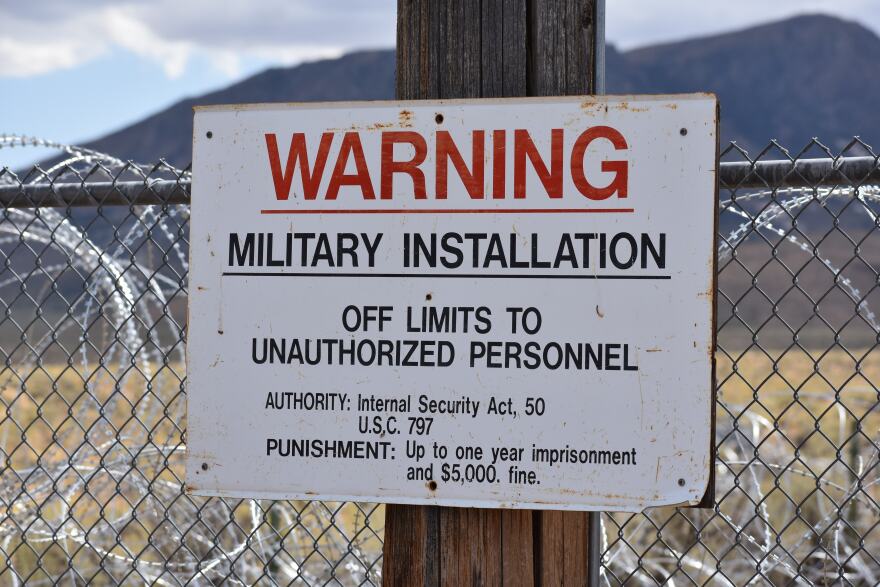For decades, Area 51,the mysterious military base on the edge of the Nevada Nuclear Test Site, has been a source of countless conspiracies. While the base has become synonymous with aliens and unidentified flying objects, experts say the base's purpose is much more mundane. KUNR's Paul Boger spoke with Peter Merlin, an aviation historian and the author of a book called Area 51: Images of Aviation.
First, what is Area 51?
Area 51 is a classified military installation located at Groom Dry Lake, which is about 84 miles northwest of Las Vegas. It’s been known by many names over the years—Paradise Ranch, Watertown Airstrip, Dreamland—but the original Groom Lake was built in 1955 to test the U-2 spy plane for the CIA.
In the summer of 1957, when the U-2 was deployed by the CIA and the test operations moved to Edwards Air Force Base, the base was essentially mothballed. An interesting factoid: people think that Groom Lake was this totally top secret, unacknowledged base until just recently. I mean, the government admitted its existence all the way in 1955, when it was being built.
The CIA used the Atomic Energy Commission as, basically, a front to put up this cover that they were making a small support facility for the Nevada Test Site, where the atomic weapons were tested. Eventually, they realized that people were going to see these planes flying around, so they came up with a story that the U-2 was a weather research airplane, supposedly being used by the National Advisory Committee for Aeronautics, the predecessor to NASA. All of that was a pretty thin cover. They managed to uphold it a little by doing weather research during training flights, but it was really a spy plane.
So, when did Area 51 go from being essentially just a base to this focus on all these conspiracy theories with aliens and UFOs? When did it move into that pop culture realm?
As far as the UFOs, that sort of came a little bit later on, but it’s always been kind of a mysterious place. When they started out with the original cover story about it being used for weather research and just announcing that it was this airfield being built with a few hangars and a runway, you know, that was given out to the news media.
Despite making it seem like something innocuous, somehow the fact that it was kind of a little more secretive than anything else got out there. Even as early as November 1955, newspaper reporters in Las Vegas were calling it the “secret proving ground within the proving ground.” If people thought about this place the same way they think about Nellis Air Force Base or any of these other big military test and training areas, you know, they wouldn’t probably have the same kind of interest in it.
The UFO story came out in the early 1980’s. It didn’t really take off because there was no internet at the time, but once we got the internet age, then all of a sudden it became this huge, meme-like kind of thing.
It’s the secrecy of Area 51 that makes it so fascinating and enthralling to the public. You know, just the fact when you say there’s a secret base in the middle of the desert, that secret nature of Area 51 just breeds speculation. It’s a blank slate for any kind of conspiracy theory, and the Air Force hasn’t helped themselves because they’ve refused to talk about it.
The more the base tries to make it a big deal about secrecy, the more interested people are from the outside. It’s human nature to want to see the forbidden.




